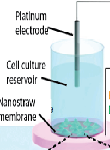|
|
|
Editorial: Injecting new life into intracellular delivery methods
|
|
|
|
|
|
|
|
|
|

|
|
|
|
Kathy Myers Gschweng, Ph.D.
|
|
|
|
University of California, Los Angeles
|
|
Department of Psychiatry, Semel Institute of Neuroscience and Human Behavior, UCLA, Los Angeles 90095, USA.
|
|
kmm2318@ucla.edu
|
|
|
|
|
|
|
|
|
|

|
|
Effective methods for intracellular delivery of nucleic acid, protein or other cargo presents an ongoing challenge for both basic research needs and clinical applications. With the expansion of CRISPR/Cas9 gene editing for research and therapeutic purposes (Fellmann, Gowen et al. 2017) and with recent clinical successes of genetically modified cell therapies for cancer treatment (Brudno and Kochenderfer 2018), improvements to existing gene delivery technologies have been highly sought after (Singh, Shi et al. 2017). The main approaches can be generally categorized as viral, chemical, or physical techniques. In their review, Tay and Melosh describe these different approaches for cellular transduction in mammalian systems with a focus on technological improvements made within the last year to each (Tay and Melosh, 2018).
|
|
|
|
|
|
|
|

|
|